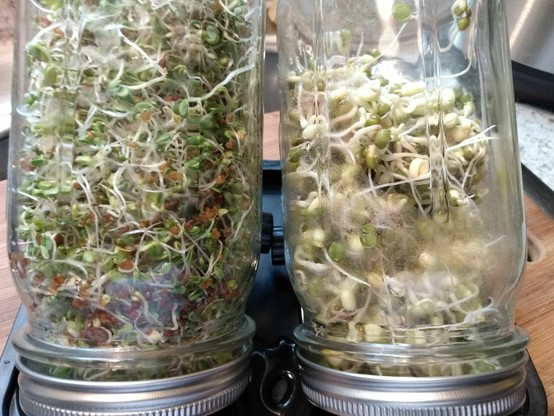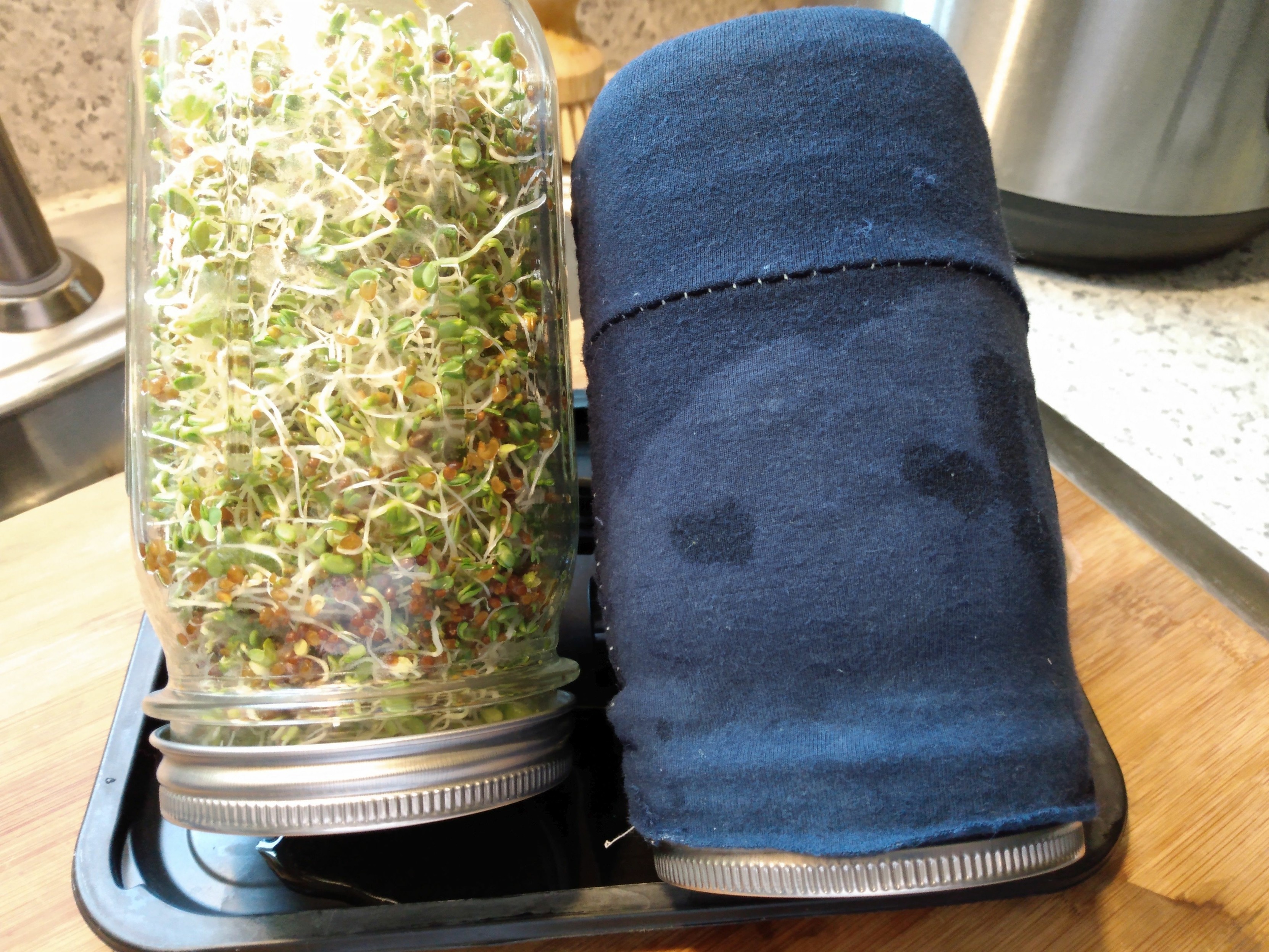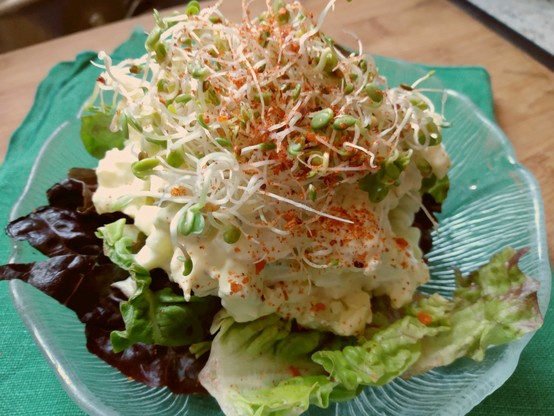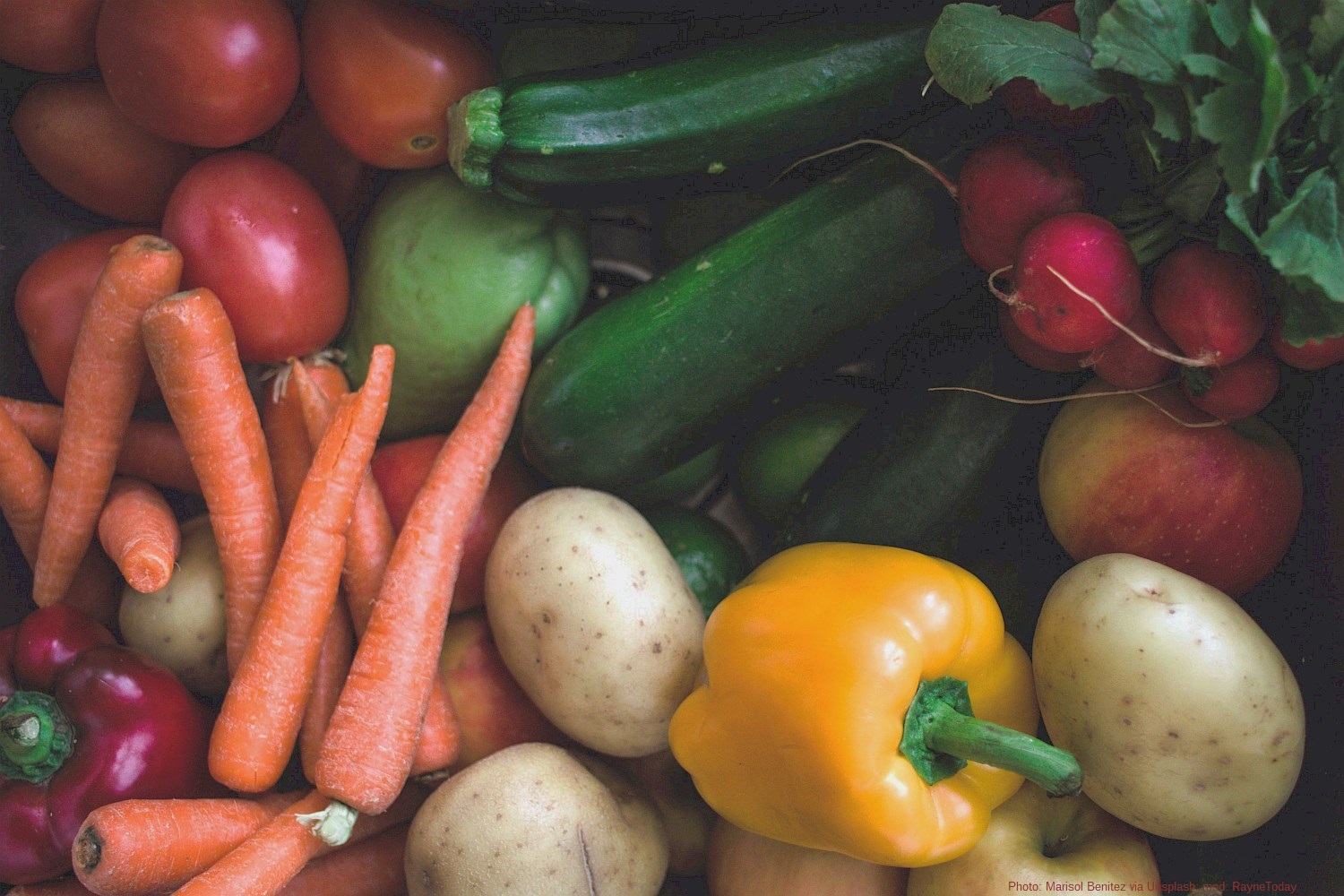Breathing Room: What Are You Growing?
[NB: check the byline, thanks. /~Rayne]
It feels like we’ve been running a marathon since jury selection began for the Trump hush money fraud trial, even though this site hasn’t concentrated as much effort on this prosecution. Bravo to the folks who have kept us up to date with their daily reporting from the court room and aggregation of reports from outside the courtroom. They’re definitely recovering from a marathon.
All of which is a way of saying we could use a little breathing room before the next big thing comes along and occupies our energy.
~ ~ ~
Because it’s what I’m working on this weekend, I want to ask what it is you’re growing. It’s nearly summer, gardens are being planted if they aren’t already well established. What’s in yours this season?
If you don’t have a garden are you growing other plants indoors?
I harvested a crop of sprouts recently, started before my garden beds were ready for vegetable seedlings. I’ve had a hankering for spicy sukju namul, a salad-like dish made with mung bean sprouts. The local grocery stores have been out of bean sprouts and I really haven’t felt like going to the local Asian grocery because I end up buying far too many additional items besides what I need.

Left: mixed salad microgreens; right: mung bean sprouts. Sprouts are four days old grown in quart-sized large-mouth canning jars equipped with a stainless steel mesh lid beneath a screw-on jar ring.
It saves me a lot of time and money to simply grow my own sprouts. A couple tablespoons of seeds in a canning jar yields a tightly-packed quart of sprouts inside five days. They’re fresh and crunchy, have a slightly sweet taste missing in store-bought sprouts which have been stressed by packaging and shipment.
Ditto for microgreen sprouts – in fact two tablespoons of mixed salad seeds in a quart jar is a little too much, the jar is packed too tightly. I have enough for a week for myself and enough to give to a friend in just one jar.
Not gonna’ lie, you have to care for these several times a day. Each jar of sprout seeds must be rinsed with fresh cold water three times a day. It doesn’t take long but it’s more work than feeding a goldfish once a day (not that I raise goldfish to eat!).
At harvest time you’ll also need plenty of water to rinse away seed hulls. They won’t hurt you if you miss some, providing a little extra fiber and crunch if hulls remain in the harvested sprouts.
Bean sprouts are definitely more work depending on how fastidious you are about their appearance. To ensure a consistent pale appearance, the jar must be covered to prevent exposure to light which induces greening in the sprouts. The hulls are larger; many need to be picked off by hand. Many people also prefer to remove the long, thin root from the sprout.

Right: Jar of mung bean sprouts encased in a sleeve made of recycled navy blue jersey fabric scraps stitched into a tube. The “sock” blocks light from reaching the sprouts, maintaining their light to white color.
But bean sprouts being larger also don’t need the same kind of equipment microgreen salad sprouts need. You can grow them easily in recycled milk cartons.
Since my last harvest I’ve had sprouts in just about every dish I’ve prepared for myself, from salads to sandwiches and stir-fry. I’ve also enjoyed my sukju namul though I think it’s time to start the next batch of bean sprouts so I can have that spicy dish again next week.

Egg and tofu salad on a bed of mixed lettuces, topped with mixed salad microgreen sprouts and a sprinkle of sriracha seasoning.
I really wish I’d grown sprouts when my kids were younger. I think they would have enjoyed both the growing and harvesting process as much as eating them. It’s a great way to ensure the family is getting enough vitamins and minerals from fresh vegetables.
~ ~ ~
If you’re not gardening outdoors or indoors, where are you getting your vegetables and fruits? At a local farmers’ market? Ordered from a farm co-op? Or from the grocery store?
Are you experiencing problems getting the vegetables and fruits you want? Bean sprouts aren’t the only vegetable I have difficulty buying at the store here in the Midwest – some of the largest grocery chains here don’t carry Napa cabbage reliably. The pandemic caused disruption but then the weather in California two winters running has also disrupted supply. I may have to try growing this vegetable hydroponically using the Kratky method.
Share your experience in comments below.
Treat this thread as open EXCEPT FOR ALL THINGS TRUMP. No Trump-related anything in this thread because this is a Breathing Room and we could use a change in topics.

